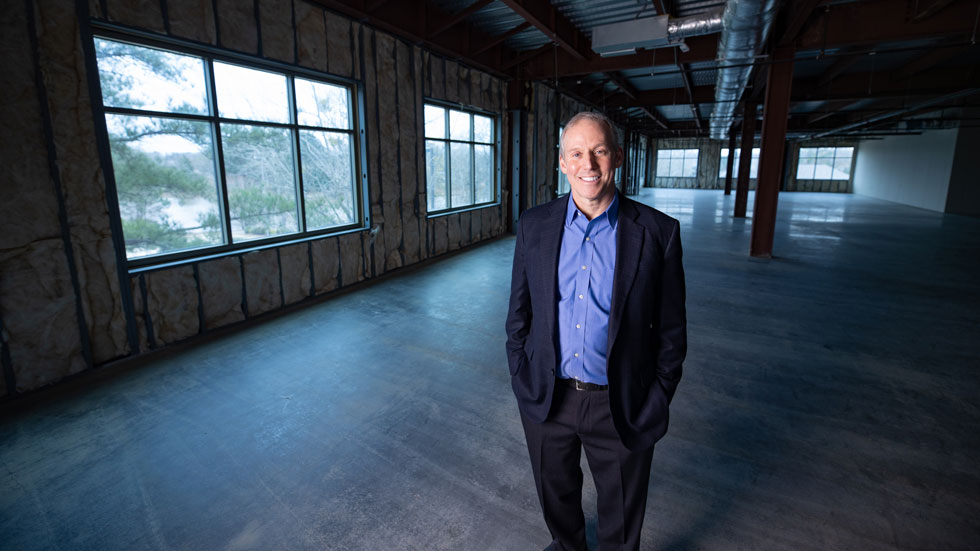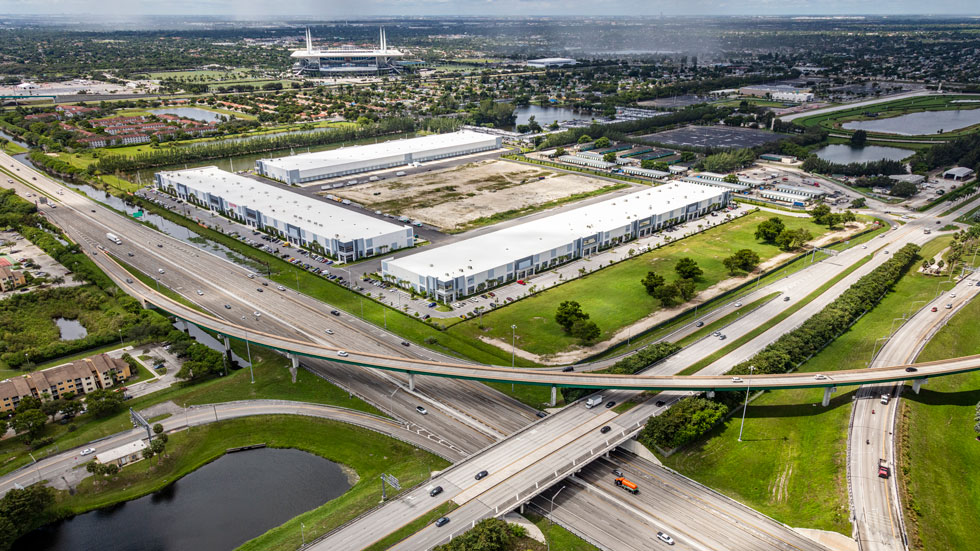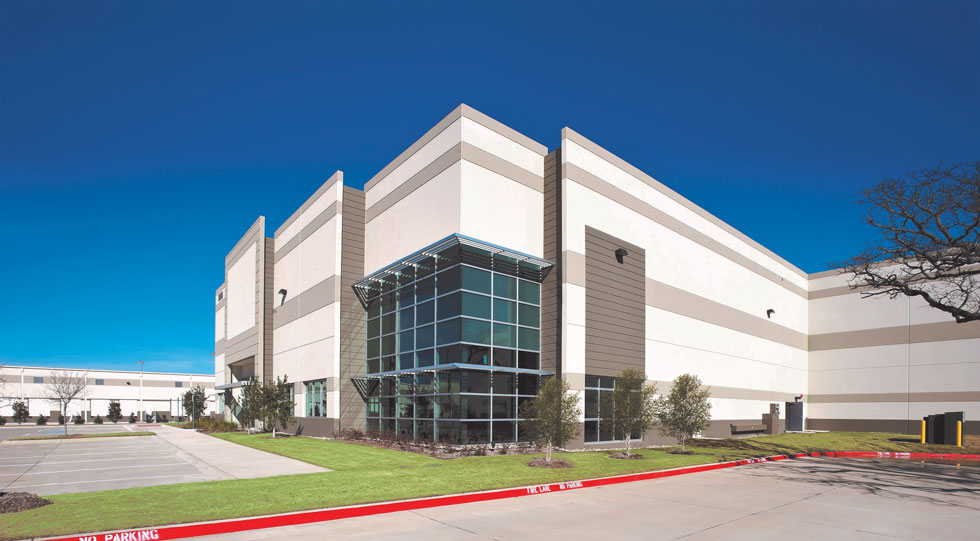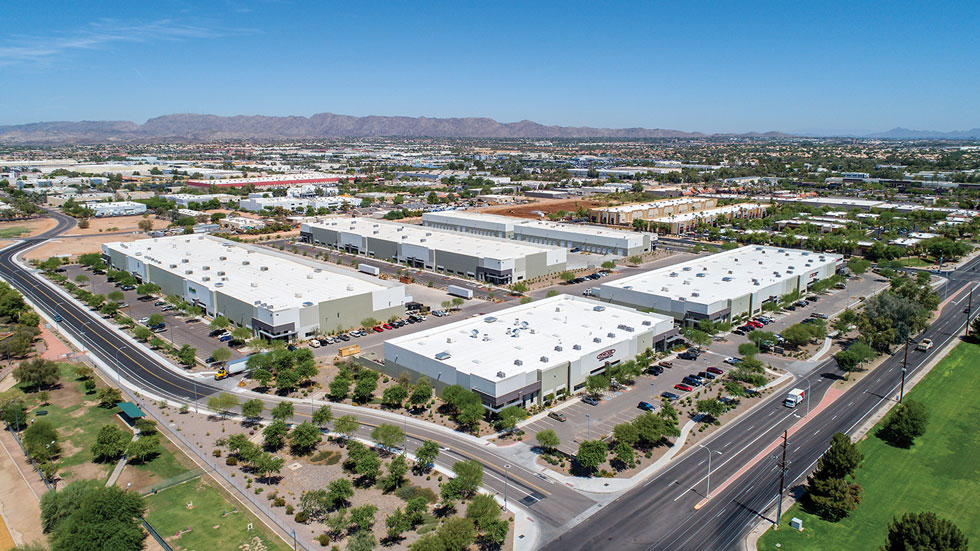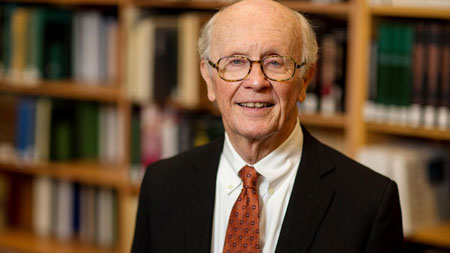EastGroup Properties is meeting the growing need for smaller industrial distribution facilities located close to consumers across the Sun Belt.
When it comes to industrial real estate, EastGroup Properties Inc. (NYSE: EGP) has operated under a simple mantra in its 30 years as a public company: bigger isn’t always better. The REIT has honed its strategy in favor of smaller warehouse buildings located closer to consumers in markets across the Sun Belt.
EastGroup’s properties are more akin to attractive office parks than typical warehouse space, and instead of focusing on a handful of prominent tenants, the REIT rents to a wide variety of businesses that may need just 15,000 or so square feet.
“Our customers typically serve a local, growing metro area,” says Marshall Loeb, EastGroup’s president and CEO. “As a result, our ‘last-mile’ locations are often irreplaceable as cities grow and our customer pool continues to grow and diversify.”
The company is also benefiting from shifting demographics as consumers exit coastal cities. “EastGroup’s focus on smaller warehouse buildings has made it uniquely sensitive to local market economies, which should work in their favor as we continue to see strong migration trends towards the Southeast and Sun Belt markets,” says Blaine Heck, a senior equity research analyst with Wells Fargo.
The company’s strategy has resonated with investors, as EastGroup’s market capitalization has soared from $2.8 billion in early 2016 to roughly $6.8 billion today. Meanwhile, the dividend has been increased or maintained for 28 consecutive years, with increases in each of the last nine, according to the company. “We have a market-tested strategy and management team,” Loeb says.
‘Secret Sauce’
The company, once known as Third ICM Realty, traces its roots back to 1969. The EastGroup name was adopted when the current management assumed control in 1983. Four public REITs have been merged into or acquired by EastGroup: Eastover Corp. in 1994; LNH REIT Inc. and Copley Properties Inc. in 1996; and Meridian Point Realty Trust VIII in 1998.
Throughout its growth over the years, the company’s business model has remained intact. “Their secret sauce is down pat,” says Alex Goldfarb, REIT analyst with Piper Sandler. “They’ve just become phenomenal at it.”
Today, the portfolio includes approximately 47 million square feet in 13 of the 15 fastest-growing major Sun Belt markets. EastGroup focuses on local economies that are growing faster than the broader U.S. economy and are better positioned to handle the ups and downs of economic cycles.
Most of EastGroup’s properties are industrial facilities known as “shallow bay” that support distribution, light manufacturing, and last-mile logistics. Some tenants have office space on site. The company prefers to operate a model somewhat similar to building out a residential development.
“We like developing a whole park. We’ll build two buildings and as those lease up, we’ll then break ground on one or two more,” Loeb explains. “The market demand pulls the supply rather than the company feeding supply into the market. This dramatically reduces our development risk.”
As EastGroup nears critical mass in a park, original tenants may need to move to a larger space, creating an opening for a new tenant paying higher rent. And, “as we complete the park, our ability to control the tenancy, the architectural design, and the landscaping creates a real sense of place,” Loeb says.
E-commerce and Covid
While e-commerce has grown dramatically in recent years, pushing companies to focus on having distribution as close to consumers as possible—EastGroup’s exact niche—the COVID-19 pandemic only increased the demand. “COVID has actually accelerated the EastGroup model in a variety of ways that will play out over the next several years,” Loeb says.
What’s more, the shift to work from home has accelerated population movement to the Sun Belt markets, pushing companies to follow, Loeb says. Meanwhile, “we’ve begun seeing companies carry more ‘safety stock’ inventory to avoid the shortages they had during COVID,” he adds. “That shift leads to increased square footage.”
Still, there has been some concern amongst investors that EastGroup’s portfolio of warehouses, which has a smaller average building size than its peers in the industrial REIT sector, could be more exposed to small businesses that are struggling to make it through the pandemic, Heck says. For now, “their rent collections have been strong,” he notes.
Hottest Markets “Rotate”
Today, more than one third of EastGroup’s net income comes from Texas, where it has properties in El Paso, Dallas, Austin, San Antonio, and Houston. The latter is its largest market in the state.
Some analysts think the company found itself overexposed to Texas when the price of oil plummeted in 2014, causing it to sell some properties. “In the past, EastGroup’s high exposure to the Houston market has been a disadvantage, but the company has done a great job of diversifying away from Houston through dispositions and additional investment in other Sun Belt markets,” Heck says.
Michael Carroll, a director at RBC Capital Markets, adds that “we were previously concerned EastGroup could face near-term disruption due to its tenant roster being largely comprised of smaller companies and the higher exposure to Houston. However, these potential issues appear modest and manageable.”
The Houston exposure peaked at roughly 21% of rents in 2015 and will be “just above 12%, and falling, this year,” Loeb says.
When measuring the portfolio, the Lone Star state is followed by Florida, where the largest concentration in terms of square feet is Tampa. Other Sunshine State cities include Orlando, Miami, and Jacksonville. The REIT also has properties in California: San Francisco, Los Angeles, Fresno, and San Diego; Arizona: Phoenix and Tucson; as well as in Charlotte, North Carolina, Denver, New Orleans, and Las Vegas. The hottest markets rotate, but “today we’d say they are Dallas, Austin, Los Angeles, and San Francisco,” Loeb says.
The company is a relative newcomer to the Atlanta market, where it owns properties including the 195,000-square-foot Broadmoor Commerce Park and the 238,000-square-foot Shiloh 400 Business Center. It is also a newer player in Greenville-Spartanburg, South Carolina, located approximately halfway between Atlanta and Charlotte along the fast-growing I-85 corridor. When it comes to new markets, “none are pressing, but Nashville is a market we’ve discussed over the years,” Loeb says. “Maybe one day.”
Dave Rodgers, a senior research analyst at Robert W. Baird & Co., trusts Loeb to do that at the right time. “A lot of companies make acquisitions that have taken them all over the map,” he says, whereas EastGroup has “stayed very disciplined.”
Tenant Diversification
EastGroup focuses on players that include food and beverage distributors, commercial and residential construction, service companies, third party logistics firms, and medical suppliers that need a smaller space closer to denser populations. “One misconception of us is that small spaces mean local companies, which isn’t true,” Loeb points out.
The company’s largest tenants include the U.S. Postal Service, with about 1% of the portfolio across five markets, and Mattress Firm Inc., with less than 1% in four markets. Most of its tenants take between 15,000 and 70,000 square feet, and its top 10 customers represent less than 10% of its annualized base rent, protecting it should a tenant or two encounter business issues or enter bankruptcy protection.
Like most REITs, EastGroup has answered investors’ increased demands for ESG investment and reporting. Some 80% of properties have skylights and/or LED lighting, while seven out of 10 have white reflective roofing. The company also has 25 properties that have received LEED certification by the U.S. Green Building Council. However, this isn’t a recent passion, Loeb says.
“As ESG has risen in prominence, we’ve learned to document and report much of what we were already doing, but people weren’t directly asking about,” Loeb says. “We recently published our second annual ESG report, and it remains a key focus for 2021. We will continue to take a lot of steps, big and small, that enhance our ESG standing,” he adds.
“Any Number of Tailwinds”
Heck thinks this year will be a good one for the company. “In 2021, we expect EastGroup to continue to show solid rent growth through in-place annual escalators and increasing rents on expiring leases,” he says, adding that occupancy will likely remain steady near historical highs. “We’ll be focused on EastGroup’s ability to continue to invest in its development pipeline as a source of growth and value creation throughout the year,” he adds.
For his part, Loeb is excited about the company’s future. “EastGroup has any number of tailwinds that we’ll benefit from at different speeds at different times,” he says. “Compared to some other real estate sectors, I’m excited about where we go from here.”
Remembering EastGroup Founder Leland Speed
Leland Speed, chairman emeritus of EastGroup’s board of directors and a director of the company, died in January at the age of 88. Speed was the company’s founder and served as CEO until 1997. His service as a director began in 1978; he served as the chairman of the board from 1983 to 2015 and then as chairman emeritus until the time of his death. Speed was also the recipient of the 2008 Nareit Industry Leadership Award.
Loeb notes that Speed’s real estate knowledge and expertise were instrumental to the growth of the company.
“His leadership and ‘healthy, wealthy, wise’ philosophy were the capstone for our positive culture. From my internship to today, he made EastGroup feel like family, and he could often be found in conversations with employees about a variety of topics, from company history to personal wellbeing and ways to make positive impacts in our communities,” Loeb says.
“Speed was a positive thinker, loved real estate, and he brought positive energy to all he encountered. He would often speak fondly of his family, and he loved telling stories about his grandchildren,” Loeb says. He adds that Speed’s legacy will live on within the company and the Jackson, Mississippi community.
